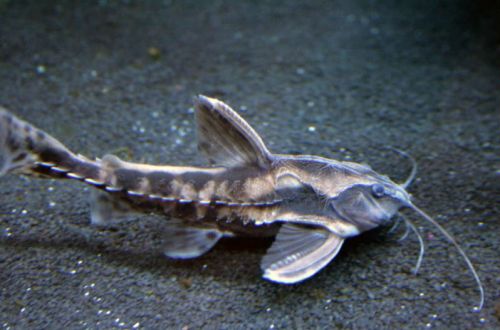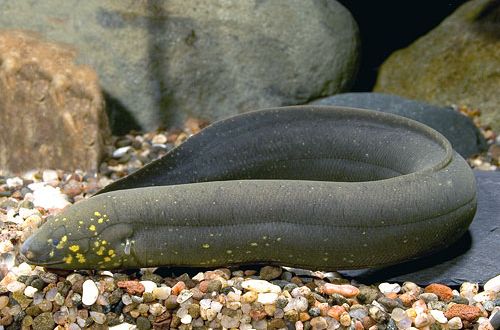
Giant catfish Raphael
The giant Raphael catfish, scientific name Megalodoras uranoscopus, belongs to the family Doradidae (Armored Catfish). A real armored catfish, a kind of knight in armor among fish. Unpretentiousness, endurance, omnivorousness and reliable protection make it possible to keep it with almost all freshwater fish species. The only serious limitation is the size, not every aquarist will be able to accommodate an aquarium weighing one and a half tons.

Contents
Habitat
It originates from reservoirs (lakes, swamps) and river systems of the subequatorial part of South America from the territory of the modern countries of Ecuador, Colombia, Brazil, Bolivia and Peru. Prefers regions with slow current or stagnant water, stays close to cover such as snags, tree roots, flooded vegetation.
Brief information:
- The volume of the aquarium – from 1500 liters.
- Temperature – 21-25°C
- Value pH — 5.5–7.0
- Water hardness – soft to hard (1-20 dGH)
- Substrate type – sandy
- Lighting – preferably subdued
- Brackish water – no
- Water movement – light or moderate
- The size of the fish is up to 70 cm.
- Meals – any
- Temperament – peaceful
- Content in a group of 4 individuals
Description
Adults reach 60–70 cm in length. The fish has impressive protection in the form of bone plates placed throughout the body and spikes stretching along the sides. The pectoral and dorsal fins are also topped with a spike. Similar outlines are reflected in the popular names of this species, for example, in the USA it is known as Catfish or Catfish longitudinal saw. Sexual dimorphism is weakly expressed, males and females are practically indistinguishable, except that the latter are somewhat larger.
Food
It accepts all types of sinking food, with age it can rise to the surface for food, but young individuals stay mainly at the bottom. Supplements from freshwater shrimp meat, earthworms, pieces of fruit and vegetables are welcome.
Maintenance and care, arrangement of the aquarium
Such a large fish needs an appropriate tank, the volume of which should start from 1500 liters, and expensive equipment. In addition, additional work will be required to strengthen the floor and conduct utilities (water supply, sewerage, electricity). Such projects are usually implemented by specialized companies, which then take over the subsequent maintenance. The owner of the aquarium will only need to feed his fish on time.
Behavior and Compatibility
A calm and peaceful species, it gets along well with almost seven fish of a similar and smaller size, and thanks to its reliable protection it can be kept together even with Piranhas. It lives in groups, it is recommended to keep at least 4 individuals in the aquarium.
Breeding / breeding
In the wild, the mating season is accompanied by seasonal migrations, the conditions for which cannot be recreated at home. Fish are exported from South American fish farms or caught from rivers.
Fish diseases
The main cause of most diseases is unsuitable living conditions and poor-quality food. If the first symptoms are detected, you should check the water parameters and the presence of high concentrations of hazardous substances (ammonia, nitrites, nitrates, etc.), if necessary, bring the indicators back to normal and only then proceed with treatment. Read more about symptoms and treatments in the Aquarium Fish Diseases section.





